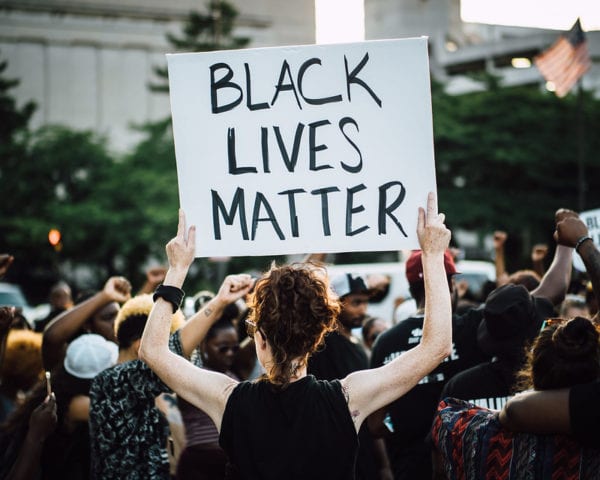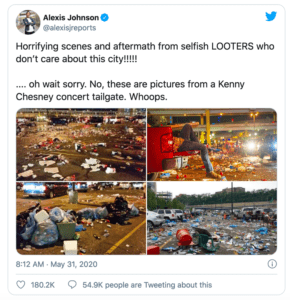
The Black Lives Matter (BLM) movement has experienced increased media prominence six years after its original inception in 2014. Protests have erupted throughout the United States after George Floyd, a 46-year-old Black man, died at the hands of Minneapolis police officers. As citizens across the nation have taken to the streets to demand justice for Floyd and countless other Black victims of police brutality, the media has closely followed to cover the demonstrations. However, some news companies have implemented controversial guidelines under the auspices of preserving journalistic objectivity in covering these protests. For other organizations, these recent protests have raised questions about the wisdom of journalism’s dogmatic commitment to objectivity, especially in the complex interplay between newsworthy stories and reporters’ own positions on social issues.
 In an attempt to preserve objectivity in the newsroom, at least one newspaper has placed additional restrictions on an outspoken Black reporter covering the protests. Alexis Johnson, an African American reporter at the Pittsburgh Post-Gazette, was barred from covering BLM content after posting a tweet which compared alleged looters associated with the protests to Kenney Chesney fans after a concert (Folkenflik, 2020).
In an attempt to preserve objectivity in the newsroom, at least one newspaper has placed additional restrictions on an outspoken Black reporter covering the protests. Alexis Johnson, an African American reporter at the Pittsburgh Post-Gazette, was barred from covering BLM content after posting a tweet which compared alleged looters associated with the protests to Kenney Chesney fans after a concert (Folkenflik, 2020).
Despite Johnson’s explanation that the tweet was merely a reference to a long running joke in the area, the Post-Gazette editors nonetheless held that it was a clear show of bias because she “gave [her] opinion through the tweet” (Folkenflik, 2020). According to a column posted by Keith C. Burris, the top editor of the Post-Gazette, everyone, including white reporters, who interacted with the tweet were also barred from covering the protests. Burris wrote “We did what we did for purely journalistic reasons,” and went on to explain “When you announce an opinion about a person or story you are reporting on you compromise your reporting. And your editor may take you off the story. This is a long-held tradition at this newspaper and at every good newspaper.” Ultimately, the argument goes, if Johnson cannot cover the protests in an objective way per the duties of a journalist, then placing a restriction on what stories she might cover is not only an appropriate response but also a more favorable and targeted response compared to dismissing her from the newsroom altogether. The editors also sidelined Michael Santiago, a Black photographer at the Pittsburgh Post-Gazette, from covering BLM content as well, ostensibly to avoid conflicts of interests throughout the duration of the protests (Folkenflik, 2020).
While some may feel that the newspaper editors were simply trying to tread cautiously during a time of social unrest, critics have pointed out that their new rules for protecting objectivity have not been equally applicable to all of their journalists – even if Johnson was barred due to an actual incident, Santiago was barred simply for being Black. Their absence from reporting duties would leave an obvious hole in the perspectives represented by the coverage; out of the 140 members in the Newspaper Guild of Pittsburgh, these two individuals were part of the small group of thirteen who were Black (Folkenflik, 2020). Furthermore, Joshua Axelrod, a white reporter at the Pittsburgh Post-Gazette, tweeted about a looting suspect and referred to them with a vulgar slur. Though Axelrod was reprimanded by his editors, he was not prohibited from covering BLM content like Johnson and Santiago were, despite the obvious show of bias (Folkenflik, 2020). Axelrod later admitted that his tweet was “not a very sound journalistic decision… stemming from a place of emotions running high” and further explained that “it was tough to separate myself as a journalist and just a person in the world” (Folkenflik, 2020). While journalists are humans just like all of us, the question arises: can the reactions, judgments, and views journalists feel potentially be sources of bias for the stories they cover? Are their reactions to current events enough to eliminate them from being objective reporters of the news?
Objectivity is often hailed as a standard that helps secure the truthfulness behind the act of reporting, but as the Pittsburgh Post-Gazette’s actions show, there may be steep costs that accompany the efforts of news organizations to try to stamp out sources of prejudgment or supposed bias among its reporters. This instance brings some general conflicts into focus. On one hand, a newsroom may try to uphold traditional impartiality, believing that objectivity will always lead to the truth, by making tangible changes in their reporting rules (Pressman, 2018). But will this supposed road to the truth necessarily lead to justice? On the other hand, critics say that such a commitment to impartiality becomes so rigid that it aids white supremacy more than it is protecting impartiality and informing the public. Tony Mosley, a host with National Public Radio (NPR), has argued that newsrooms who bar Black reporters from covering BLM are essentially saying that “white journalists just by default are neutral and objective and they can cover everything, but somehow [Black journalists] can’t cover [their] own communities” (Leong, 2020). Many would even suggest that failing to side with the BLM movement would indicate a failure in the media’s role to advocate for and enable a just society (“EDITORIAL BOARD,” 2020). Given that newspapers ought to aim for an informed and just society or public, the question remains: can newspapers and journalists be objective while taking or voicing specific stands for social justice, or does such advocacy risk diluting or compromising their mission of informing the public in a democracy?
Discussion Questions:
- What was problematic about the Pittsburgh Post-Gazette’s decision in this case? What should they have done differently?
- What does it take for a journalist to be qualified to cover a story of public interest? What would disqualify a journalist from being a trustworthy reporter on some news item?
- Should the ideal of objectivity be upheld by news organization in times of great social unrest or should there be special exceptions?
- What ethical guidelines should journalists follow to juggle and balance their reactions and beliefs outside of their job duties and their activities in the confines of their reporting?
Further Information:
Burris, K. C. (2020, October 01). “Keith C. Burris: Truth, fairness and the Pittsburgh Post.” The Pittsburgh Post-Gazette. Available at: https://www.post-gazette.com/local/region/2020/06/10/Truth-fairness-Pittsburgh-Post-Gazette-burris-george-floyd/stories/202006090137
“EDITORIAL BOARD: Black lives matter, and saying so is objective journalism.” (2020, June 06). The Student Life. Available at: https://tsl.news/saying-black-lives-matter-is-objective-journalism/
Folkenflik, D. (2020, June 08). “Editors Barred A Black Reporter From Covering Protests. Then Her Newsroom Rebelled.” NPR. Available at: https://www.npr.org/2020/06/08/872234014/editors-barred-a-black-reporter-from-covering-protests-then-her-newsroom-rebelle
Leong, K. (2020, June 24). “Ep. 10: Are We Going To Be OK? For Black journalists on the frontlines of the #BLM movement, objectivity does not mean neutrality.” NPR. Available at: https://www.kuow.org/stories/ep-10-are-we-going-to-be-ok-for-black-journalists-on-the-frontlines-of-the-blm-movement-objectivity-does-not-mean-neutrality
Pressman, M. (2018, November 05). “Journalistic Objectivity Evolved the Way it Did for a Reason.” TIME Magazine. Available at: https://time.com/5443351/journalism-objectivity-history/
Authors:
Claire Coburn, Kat Williams, & Scott R. Stroud, Ph.D.
Media Ethics Initiative
Center for Media Engagement
University of Texas at Austin
January 20, 2021
Images: John Lucia / CC BY 2.0 / Twitter.com
This case study is supported by funding from the John S. and James L. Knight Foundation. It can be used in unmodified PDF form for classroom or educational settings. For use in publications such as textbooks, readers, and other works, please contact the Center for Media Engagement.
Ethics Case Study © 2021 by Center for Media Engagement is licensed under CC BY-NC-SA 4.0




